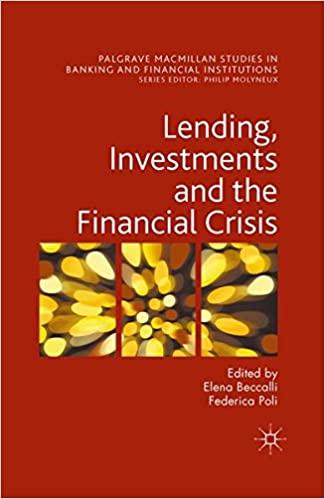Question
URGENT HELP WITH THIS QUESTION: How do you decide to move values on a timeline using compound interest and the concept of the time value
URGENT HELP WITH THIS QUESTION:
How do you decide to move values on a timeline using compound interest and the concept of the time value of money?
A. Move all cash values on the timeline to the focal date. If the cash flow is after the focal date, we will move the cash flow back to the focal date by dividing it with the compound interest factor of (1+i)^n. If the cash flow is before the focal date, we will move the cash flow forward to the focal date by multiplying it with the compound interest factor of (1+i)^n. If any cash flow is on the focal date, then we do not need to divide or multiply the cash flow with the compound interest factor and we can include the cash value as it is on our timeline.
B. Move all cash values on the timeline to the focal date. If the cash flow is after the focal date, we will move the cash flow back to the focal date by multiplying it with the compound interest factor of (1+i)^n. If the cash flow is before the focal date, we will move the cash flow forward to the focal date by multiplying it with the compound interest factor of (1+i)^n. If any cash flow is on the focal date, then we do not need to divide or multiply the cash flow with the compound interest factor and we can include the cash value as it is on our timeline.
C. Identify the focal date, if not known, assume the present point on your timeline as the focal date. Move all cash values on the timeline to the focal date. If the cash flow is after the focal date, we will move the cash flow back to the focal date by dividing it with the compound interest factor of (1+i)^n. If the cash flow is before the focal date, we will move the cash flow forward to the focal date by multiplying it with the compound interest factor of (1+i)^n. If any cash flow is on the focal date, then we do not need to divide or multiply the cash flow with the compound interest factor of (1+i)^n and we can include the cash value as it is on our timeline. Note, dividing a value on the timeline by (1+i)^n implies that we are finding the present value. On the other hand, multiplying by (1+i)^n implies that we are finding the accumulated value.
D. Move all cash values on the timeline to the focal date. If the cash flow is before the focal date, we will move the cash flow back to the focal date by dividing it with the compound interest factor of (1+i)^n. If the cash flow is after the focal date, we will move the cash flow forward to the focal date by multiplying it with the compound interest factor of (1+i)^n. If any cash flow is on the focal date, then we do not need to divide or multiply the cash flow with the compound interest factor and we can include the cash value as it is on our timeline.
Step by Step Solution
There are 3 Steps involved in it
Step: 1

Get Instant Access to Expert-Tailored Solutions
See step-by-step solutions with expert insights and AI powered tools for academic success
Step: 2

Step: 3

Ace Your Homework with AI
Get the answers you need in no time with our AI-driven, step-by-step assistance
Get Started


